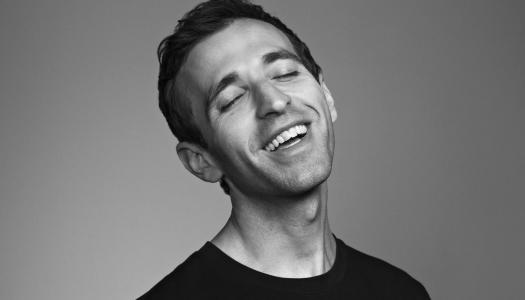Bryton Shang ’12: Teaching the world a better way to fish
Bryton Shang ’12 is the founder and CEO of Aquabyte, a global company that applies machine learning and computer vision to the fastest growing sector of food production: fish farming. Aquabyte installs smart cameras in fish pens that can send information to a machine learning platform, allowing salmon and trout farmers to analyze trends and better manage their farms in an environmentally sustainable way. The company, established in 2017, has offices in Silicon Valley, Norway and Chile and also is working with fish farmers in Scotland. This is Shang’s third startup, after beginning his post-Princeton career in quantitative finance.
What keeps you up at night?
There are a lot of challenges with building a company that solves a problem in aquaculture when you are operating out of the familiar Silicon Valley environment. I’m thinking about lots of challenges, like, how do we weigh these fish based on their images? And are we doing it the scientifically correct way? That requires us to understand the biology of the fish, and identify the fish based on spot patterns so you’re not double counting the fish. I also need to think about business questions, such as what product can we deliver to our customers that’s going to have the most value, so they’ll be able to scale with us. And then, looking forward, how do we expand across different product lines, different countries, different species of fish?
If you’re building an app on a website, then your world is virtual. That’s really just about managing engineers and building the right product. For us, we’re dealing with the real science and biology of these fish, and the international layer adds some complexity as well. The fact that we’re doing stuff in the real world is pretty challenging and fascinating at the same time.
What inspired you to work in this field?
My motivation and interest initially came from a data science, machine learning aspect, because I studied operations research and financial engineering at Princeton. I was looking into industries that could benefit from the same machine learning algorithms that power Facebook, Netflix and self-driving cars. I learned about fish farming from a former startup business partner. The conversation got my wheels turning.
I did more research on the industry and it became eminently clear that you could help farmers in understanding how the fish grow so they can operate their farms more efficiently. The fish pens are half a football field in diameter and 100 feet deep. Farmers have no clue because the fish are beneath the surface, and they can’t see what’s happening.
But it wasn’t until I went to Norway that I really understood the potential. In the U.S., fish farming is not as big of an industry. I’m working with some policy groups to help develop a domestic fish farming industry. In Norway, it’s their third largest economic industry, with $10 billions of revenue annually. That’s when it clicked for me.
What excites you most about your work?
What excites me is the opportunity to make a big impact on how the world eats, where we get our food and how we’re able to get it from more sustainable sources. Being able to affect that with machine learning, data science and other technologies that can revolutionize how farms are producing fish is fascinating to me. And we’re doing it in a relatively unique way. If you were in Norway and working in fish farming, you wouldn’t have the capabilities or knowledge to build this type of product. If you’re in Silicon Valley, you wouldn’t necessarily know about this problem. We’re connecting the world and also enabling technology development that wasn’t possible before. It’s really exciting just to create something new.
We’re also having an impact beyond the business realm, and starting to influence policy. A few weeks ago, our product became the first AI-based product approved by authorities in Norway to monitor sea lice, a type of external parasite. The Food Safety Authority in Norway — similar to the FDA in the U.S. — monitors these fish farms and requires farmers to go out every week to count the fish by hand. If you can have a camera do that, you don’t have to handle the fish, it doesn’t stress the fish, and it’s a lot more precise. Our cameras take pictures of the fish and AI is recognizing the fish and the sea lice on the fish. We provide a dashboard where farmers can see the trends and the data, which helps them comply with these regulations.
How do you hope that your work will help create a better future?
If you look at food sustainability, protein sustainability, fish are a lot more efficient to produce, both from a greenhouse gas emissions standpoint, but also from a bio-energy standpoint. The world is 70 percent water but at present we only produce 5 percent of our food from the oceans. If we could sustainably harvest the oceans better, that would be a good thing.
What does “forward thinking” mean to you?
One way to think about it is if you were to put yourself in the future, and imagine what the world would be like; then work back from that to where we are today. How do we get to where we are in the future?
Some entrepreneurs think more in terms of, “By virtue of me working hard on it, my startup has a reason for existing in that future,” versus working back from the future. This is a humbling perspective to take. Forward thinking is actually an interesting shift in how one thinks about starting a company or developing a business — a more scientific way of thinking.


